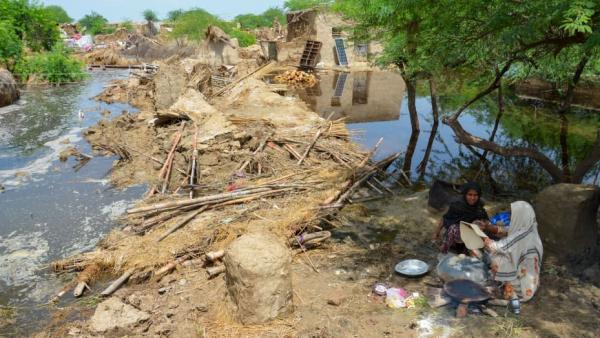Pakistan floods: impact assessment and international responses
by Tobias Schmitz
5 Oct 2022 by The Water Diplomat

On September 4th, Ahsan Iqbal, Pakistan’s Minister for Federal Planning made an appeal for an “immense humanitarian response for 33 million people” following the widespread and unprecedented flooding that the country experienced over the past months. Rainfall during July and August was 190% above the thirty-year average and during August, and rainfall in Balochistan and Sindh provinces was 590% and 726% above average respectively. As a result, in early September, one third of the entire country was flooded, affecting 15% of Pakistan’s population. According to Relief Web, as of the 14th of September, nearly 1,400 people had lost their lives, of which 499 children. In addition, floods have washed away 65% of Pakistan’s main food crops, and 3 million livestock have disappeared. 1,4 million hectares of cropland are flooded in the most affected areas of Sindh and Balochistan Provinces, and an estimated 750 000 livestock have been killed. The World Health Organisation (WHO) estimated in early September that 6.4 million people were in direct need of assistance. It further estimated that some 900 health facilities had been affected and warned of outbreaks of diarrhoeal diseases, skin infections, respiratory tract infections, malaria, and dengue virus. By mid-September these outbreaks were manifesting themselves: the World Food Programme reported 134,000 cases of diarrhoea and 44,000 cases of malaria in Sindh province. The WHO has delivered mobile medical camps to affected districts, has delivered more than 1.7 million water purification tablets, and has provided test kits to detect the emergence of infectious diseases.
International relief efforts have been pouring in and are being coordinated by the National and Provincial Disaster Management Authorities and the Pakistan Humanitarian Forum. To date the World Bank has announced US $ 350 million in support, the World Food Programme has offered $ 110 million, The U.S. government has committed $ 33 million, the UK has committed $ 46.6 million, the Asian Development Bank has committed $ 20 million, the Disasters Emergency Committee has raised US $ 15,8 million, Islamic Relief has raised US $ 7,5 million, and Japan has contributed $ 7 million.
The economic impact of the floods is expected to be significant: a report by the International Centre for Integrated Mountain Development points out that Sindh province accounts for 42% of national rice production, 23% of cotton production, and 31% of sugarcane production. Beyond direct economic losses there are major losses to agricultural equipment, rural infrastructure, and the costs of draining and rehabilitating agricultural land.
